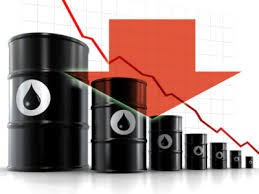Pressured by reports confirming that OPEC’s production rose in November, crude oil futures slid on Wednesday as the U.S. Federal Reserve announced a slight interest increase prior to the close of markets, according to Bloomberg MarketWatch.
January West Texas Intermediate crude fell $1.94 cents, or 3.7%, to settle at $51.04 a barrel on the New York Mercantile Exchange.
February Brent crude, the global benchmark, shed $1.82, or 3.3%, to finish at $53.90 a barrel on the London ICE Futures Exchange.
The U.S. Energy Information Administration reported U.S. crude oil supplies fell by 2.6 million barrels for the week ending December 9.
Late Tuesday, the American Petroleum Institute reported a climb of 4.7 million barrels, while analysts and traders polled by The Wall Street Journal expected the EIA to post a decline of 1.7 million barrels.
The EIA’s reported draw exceeded analyst expectations and “certainly stood in stark contrast to the API’s reported nearly 5-million-barrel build expectation,” said Troy Vincent, oil analyst at ClipperData.
Meanwhile, natural gas futures finished solidly higher, with the January contract up 6.6 cents, or 1.9%, settling at $3.54 per million British thermal units on the New York Mercantile Exchange.
Oil prices also saw pressure from OPEC’s monthly report and a decision by the Federal Reserve to raise rates. Signifying confidence in the improving economy, the Federal Reserve increased its key interest rate by 0.25% on Wednesday afternoon. The interest hike was the first in 2016.
The OPEC report showed the cartel’s output climbed to 33.87 million barrels a day in November. In order to meet its agreed output target of 32.5 million barrels a day from January 1, OPEC must cut production by more than the 1.2 million a day as originally planned.
The group also said that it is necessary for oil producers outside the cartel to stick to their pledge of reducing their supplies by 558,000 barrels a day to balance the struggling oil market.
If both sides adhere to their promises, it “will accelerate the reduction of global inventories and bring forward the rebalancing of the oil market to the second half of 2017,” said OPEC, in its report.
On Tuesday, the International Energy Agency’s report revealed that OPEC production was at a record high in November.







